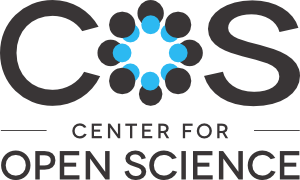Location
Our mission is to increase openness, integrity, and reproducibility of research.
These are core values of scholarship and practicing them is presumed to increase the efficiency of acquiring knowledge.
For COS to achieve our mission, we must drive change in the culture and incentives that drive researchers’ behavior, the infrastructure that supports their research, and the business models that dominate scholarly communication.
This culture change requires simultaneous movement by funders, institutions, researchers, and service providers across national and disciplinary boundaries. Despite this, the vision is achievable because openness, integrity, and reproducibility are shared values, the technological capacity is available, and alternative sustainable business models exist.
COS's philosophy and motivation is summarized in its strategic plan and in scholarly articles outlining a vision of scientific utopia for research communication and research practices.
Because of our generous funders and outstanding partners, we are able to produce entirely free and open-source products and services. Use the header above to explore the team, services, and communities that make COS possible and productive.
Members:
Resources
Displaying 396 - 400 of 447Credit Markets and Land Ownership for Young and Beginning Farmers
Agricultural Credit, Land Ownership, Young and Beginning Farmers, Agricultural Finance, Farm Management, Land Economics/Use, Q14, H24, H25,
Direct payments, spatial competition and farm survival in Norway
We argue that interdependencies between farms are crucial for assessing effects of direct payments on farmers exit decisions. Using spatially explicit farm level data for nearly all Norwegian farms, a binary choice model with spatially lagged explanatory variables is estimated in order to explain farm survival from 1999 to 2009. We show that ignoring spatial interactions between farm leads to a substantial overestimation of the effects of direct payments on farm survival.
Status of land ownership, land conflict, and perceptions and knowledge about the land law in Mozambique: Analysis of nationally representative data to assess the impact of land policy monitoring and capacity building activities
Demand and Price Analysis, International Relations/Trade, Land Economics/Use,
Do Wealth Gains from Land Appreciation Cause Farmers to Expand Acreage or Buy Land?
Recent increases in farm real estate values in the U.S. have increased farm equity in the form of unrealized capital gains. Exploiting periods of high and low appreciation that caused different increases in wealth for farmers owning different shares of their farmland, we examine if U.S. grain farmers expanded their acres harvested or acres owned in response to an increase in their land wealth. We find that land wealth had little effect on farm size. However, for farms of a similar size, owning 10 percentage points more land increased the growth rate of land owned by 2 percentage points.
Evaluation of Comprehensive Benefits of Land Consolidation Based on AHP and FUZZY
Based on the modern comprehensive evaluation method, in accordance with the scientific, objective and systematic principles, we select four factors (economic, social, ecological and landscape benefits), to establish the evaluation indicator system of comprehensive benefits of rural land consolidation.


